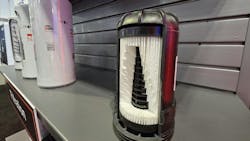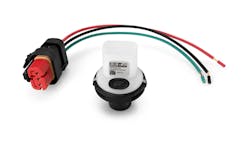The commercial vehicle industry is in a time where increasingly complicated engine and air systems and evolving fuel types mean that filters are not just for trapping contaminants; they are an important line of defense protecting vehicle components and uptime.
Unforeseen complications, like filters clogging well before their service life was supposed to be up, can be resolved by looking at the science of the filter itself.
Why filtration science matters
In 2022, noted Ismail Bagci, technical director at Fleetguard, a brand of Atmus Filtration Technologies, the result of an unanticipated shift in governmental policies, changing feedstocks, and geopolitical events that limited supplies of conventional ultra-low sulfur diesel (ULSD) was that fleets accelerated their use of a variety of biodiesel blends.
But the changes in biodiesel blends came with a consequence no one anticipated. Users of a new diesel engine, he noted, reported premature clogging of fuel filters that resulted in service intervals 30% to 50% shorter than expected.
The filters were caked with an unusually high amount of soft, gel-like deposits of an ultra-fine nature, Bagci explained further. Chemical analysis revealed the deposits were metal salt carboxylates that formed in the engine under the high temperatures and pressures of the high-pressure common rail (HPCR) fuel injection system. Then, uncombusted fuel—containing the newly formed carboxylates—was recirculated back through the fuel system.
While Fleetguard filters with nanofiber technology targeted and captured hard contaminants such as sand and dust, the company discovered that the filters lacked the capacity to hold the volume of soft organics created from the new biodiesel blends. After evaluating many different combinations of media, it was determined that adding a glass layer would hold the high volume of soft contaminants and still meet the OEM’s original service intervals.
Testing validated this approach, Bagci noted, and the redesigned filters provided seven times greater life and more than double the carboxylate removal efficiency compared to the original filter design.
Understanding filter life
To help customers better determine their remaining air filter life, Fleetguard has introduced FleetguardFIT, an air restriction indicator that enables maintenance intervals to be determined based on real-world conditions. A direct replacement for spring-loaded mechanical restriction indicators, the new technology uses an algorithm that monitors restriction across the air filter and changes color from green to yellow to red based on the filter’s restriction, providing both a visual indication and an electrical signal of filter status.
At Geno’s Garage, a Ram Cummins Turbo Diesel and Ram 1500 EcoDiesel parts business in Cumming, Georgia, Brandon Parks, business and product development manager, immediately saw the value of FleetguardFIT. “Even though I was not having any problems, I removed and inspected my air filter, and I had never seen it look so bad,” he said. “But according to the FleetguardFIT restriction indicator, it still had life left so I realized I could extend the time between changes.”
About the Author

Seth Skydel
Seth Skydel, a veteran industry editor, has more than 36 years of experience in fleet management, trucking, and transportation and logistics publications. Today, in editorial and marketing roles, he writes about fleet, service, and transportation management, vehicle and information technology, and industry trends and issues.

